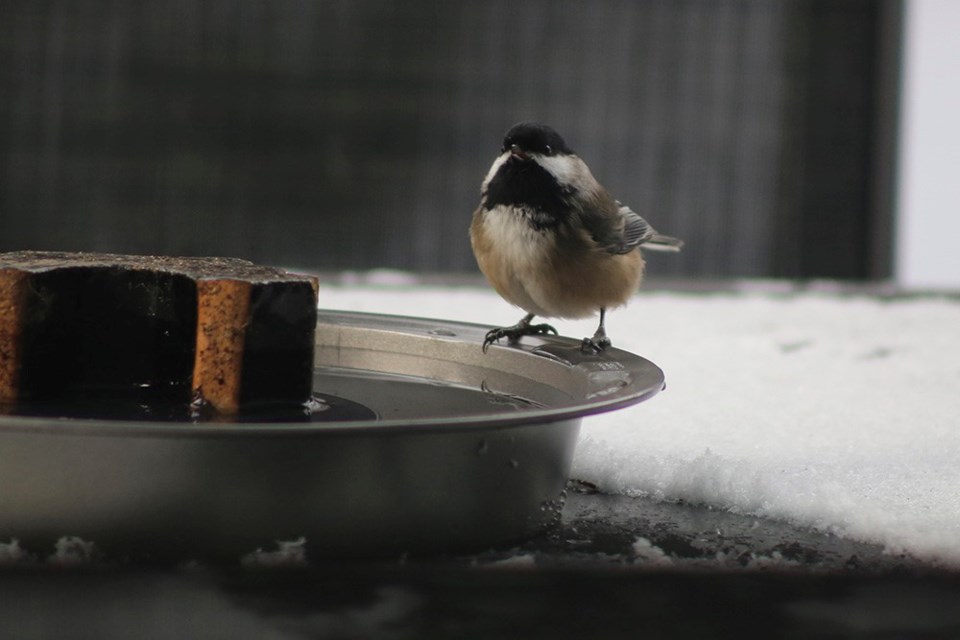Managing extreme weather has been extraordinarily difficult for humans, but what of the wildlife?
Our family has observed changes both in the forests and in the behaviour, foraging and overwintering habits of black bears, wild cats, coyotes, raccoons, raptors, rodents, and birds. “Bear in Area” signs appear so frequently that they go unnoticed.
Barking dogs alert us when an increasingly habituated bobcat visits our neighbourhood. The cacophony starts dimly, in the distance, at the far end of the easement behind our home, and ends boisterously just over the fence. The dogs tire eventually, having not noticed that the bobcat had long since traversed the conifer canopy back into the forest.
I feel very privileged to live in such close proximity to wild things, and have no illusions about where wildlife belongs and the critical debt that humans owe in not only protecting forest ecosystems, but in maintaining clear boundaries that keep both humans and animals safe.
Here at home, we have learned to harvest fruit, berries, corn and such just before they are ripe – before larger mammals catch wind of an invitation to dine. As time and financial resources allow, we are replacing old-school ornamental plantings with native shrubs, trees and perennials that provide birds with year-round shelter and nesting materials, plus a seasonally appropriate supply of high energy seeds, berries, pollen and nectar.
Feeding birds cayenne-spiked nuts and seeds as a diet supplement, only during the winter weeks when their natural food sources are unavailable to them, seems the right thing to do, given that we upset their natural balance in the first place. Birds, unlike mammals, are indifferent to the pain-producing effects of capsaicin, so I don’t worry about inviting unwanted visitors.
During the recent “cold snap of a lifetime,” when natural food sources for birds were buried under snow and ice, and puddles were frozen solid, I woke each morning to find many species of birds cohabiting expectantly under shelter of our outdoor patio kitchen. They were waiting for a pan of fresh water.
I learned during my permaculture education that, during winter, wild birds need fresh clean water as much as they need food. Birds are at risk of dehydration if they expend extraordinary energy searching for water, converting snow to water internally, or preening excessively to maintain their insulating puffiness.
At any given time, we have eight sources of clean water in our gardens for the birds, bees, butterflies and small animals. They are placed strategically to provide one or more elements of protection, sustenance, warmth, or cooling shade, and also to encourage the beneficial distribution of poop. One small fountain-style waterer outfitted with a submersible heater and sheltered from the snow, is the usual go-to watering hole on very cold days.
For weeks now, the heated waterer has been frozen solid, packing it in at -15 C. Luckily for the birds, and for us, we were home for the holidays, able to swap out the water pans every few hours as needed, providing some measure of relief for our small feathered and furry friends.
The tiny wild things are reacting to the cold in ways that I have not seen previously. Birds and squirrels of all species and sizes are feeding and drinking together, side by side as if they know that their lives depend on a ceasefire-like spirit of co-operation and community.
At any other time of year, stellar jays trump towhees and chickadees, towhees trump thrush, and small but mighty Douglas squirrels trump everything including the many-times larger grey and black squirrels, even crows. During these extraordinary days they are making room for each other, sharing equally both the sustenance and the space, taking only what they need.
These tiny and vulnerable teacher creatures, inspired instinctively to stoicism, generosity and equanimity, move me to tears. They bring me joy. They make me laugh.
It goes without saying that nature knows best how to heal our beautiful blue planet. She is showing us again and again in countless extreme and tiny ways that it will take a selfless, ceasefire-like spirit of co-operation and community globally, to repair and maintain a natural balance.
I resolve, this new year, to pay closer attention.
Laura Marie Neubert is a West Vancouver-based urban permaculture designer. Follow her on Instagram @upfrontandbeautiful, learn more about permaculture by visiting her Upfront & Beautiful website or email your questions to her here.
For a taste of permaculture, click on the YouTube link below:
(Video - Courtesy of West Vancouver Memorial Library)



